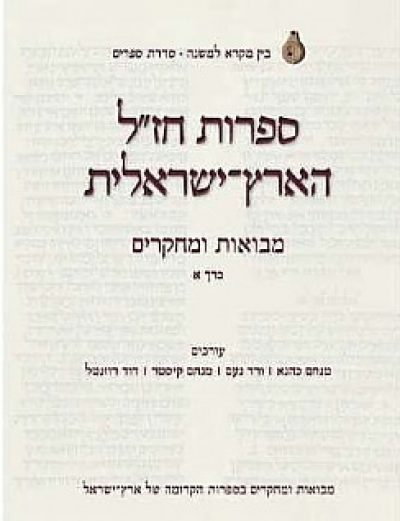Clearly, the birth of a child is a joyous occasion for the parents, the family and the wider community. Traditionally, however, although there was a very important ritual for the birth of a boy—circumcision—there was really no corresponding ritual or celebration for the birth of a girl. That situation has changed somewhat, as we mentioned above, but we will first concentrate on the traditional ceremony for the boys.
The Scriptural basis for this is Genesis 17. The Lord makes an everlasting covenant with Abraham and his “seed” after him. The sign or token of the covenant is the removal by cutting off of the foreskin on the male genital organ. With this small “operation,” or by removing a part of his anatomy, paradoxically, the individual will become “complete” or “whole-hearted.” The text states that “the uncircumcised male…shall be cut off from his people.” Thus cutting becomes a symbol both of belonging and of not belonging. The location of that symbol is the organ of procreation, and, if Abraham’s descendants keep the Covenant, they are promised “exceeding” fruitfulness. Circumcision is thus the first commandment (repeated in Leviticus 12:3) given to Abraham and his family, as a particular group, set apart from the rest of humanity. (Nevertheless, anthropological evidence as well as rabbinic legends would indicate that other peoples practiced this rite, including the ancient Egyptians and the Australian aborigines.)

By Cheskel Dovid
In verses 24 and 25 of this chapter, Abraham is circumcised at the age of 99 and his son, Ishmael, at 13. Circumcision of boys at puberty is practiced by many Muslims. Still, verse 12 stipulates that the preferred age for Jewish circumcision is eight days. By performing the ceremony on the 8th day, we insure that every male baby will have experienced at least one Shabbat in his life before he becomes a member of the community.
To this day, Jewish male babies throughout the world are circumcised on the 8th day, unless medical conditions mandate a longer waiting period. Circumcision of a healthy baby at the right time is so important that it is to be done even on the Shabbat or the holiest day of the year, Yom Kippur. There are many moving stories of parents who braved extremely difficult circumstances during times of persecution—even recently, in Soviet Russia—in order to perform this ceremony on their new-born sons. The strange story of Moses and Tzipporah in Exodus 4: 20-26 shows the tremendous importance attributed to performing the act of circumcision.
In later Biblical passages—Deuteronomy 10:16, Jeremiah 4:4 or 9:25—we see circumcision being used in a metaphorical sense, “circumcision of the heart.” Some of the early Christians used these texts to indicate that they no longer had to perform physical circumcision in order to enter into the Covenant with God (see: Acts 15.) But Jews continue to interpret circumcision as an obligatory physical act that has symbolic and spiritual ramifications. Adult male converts to Judaism must undergo circumcision, or, if they have already been circumcised medically, they must at least perform what is called hatafat dam, the ritual spilling of some blood from their genital organ.
The circumcision ceremony is called in Hebrew Brit Milah, literally “the covenant of circumcision,” although in common speech, this is sometimes simply abbreviated as Brit. A specially trained professional known as a mohel, “circumcisor”, performs the act as a representative of the baby’s father, on whom the commandment is incumbent. (Occasionally, a mohel may also be a medical doctor or a rabbi, but that is not essential.) At the ceremony, care is taken to maximize the speed of the procedure and minimize the trauma to the infant. Often, a drop of the wine used in the ritual is given to the baby to help him stop crying and fall asleep.
Other than the act of circumcision itself, the ritual involves a series of blessings recited over a cup of wine. During the ceremony, the baby is held on a cushion by the sandak, “godfather.” Often, one of the grandfathers is honored by being appointed the sandak for his grandson. The sandak sits on a special chair called “The Chair of Elijah.” The Biblical reference is to the passage in I Kings 19:9-14. Elijah, in a fit of despair, proclaims to the Lord, “for the children of Israel have forsaken thy covenant…and I, even I only, am left…”Elijah is symbolically invited to every Brit held in any Jewish community in the world, to demonstrate to him that indeed, we have not forsaken the Covenant.
The baby is given his name at the ceremony (see: Luke 1:59-60 for the circumcision and naming of John the Baptist.) The guests then express the wish that as the child entered the Covenant, so should he grow up to a life of “Torah, matrimony and good deeds.” The religious ceremony is followed by a festive meal, sometimes accompanied by singing and dancing and/or homilies, explaining why the name was chosen, what the family’s roots are, setting out values that the parents wish to inculcate in their child. Often the child is named after a relative; in different Jewish communities, there are different customs as to whether he should be named for a deceased relative or one who is still alive. The parents hope that their child will grow up to emulate his name-sake as a role model. In many families, festive meals—for the various occasions described in this booklet– are followed by the singing-recitation of the Grace after Meals. The tradition mandates special additions to the Grace for the feasts following a Brit or a wedding.
Guests at the ceremony generally bring gifts for the baby and wish their hosts Mazal Tov, literally “good luck,” but more precisely “congratulations,” (corresponding to the Arabic mabruk.) In Israel, people often have the custom of wishing everybody who attends a simha, a happy life cycle event, “Mazal Tov,” whether they are directly connected or not, since all of these are occasions for general celebration.
Sometimes, rather than actually inviting guests to a Brit, traditional parents will simply announce where and when the Brit is being held. Since Britot (the plural of Brit) are often held during a workday, the traditional notion is that you don’t actually invite anyone, lest they feel an obligation to come. Nevertheless, people often take off time from work to attend a Brit.
Recent studies seem to indicate that male circumcision has some medical value for the health, both of the circumcised individual and of his future wife. There seems to be less evidence of certain kinds of cancers among circumcised men and of cancer of the cervix among their wives. However, the reason for Brit is not for physical health; it is a rite of initiation into the Jewish community. Interestingly, although there is a tiny movement today, primarily in the West, of people who oppose infant circumcision as a “barbaric custom,” this movement has very little, if any, influence in Israel. Here, although not required by Israeli law, the overwhelming majority of Jewish couples, even ardent secularists, hold a Brit for their sons.
Why is Brit Milah such a powerfully persistent tradition? We might suggest three reasons:
1) One of the central themes of Jewish culture is the transmission, “from generation to generation,” of the chain of tradition. Even nonobservant Jews often see themselves as part of this chain, going back to the Exodus from Egypt, and they want to pass this identity along to their children.
2) The Book of Maccabees records that in ancient times, some very assimilated or Hellenized Jews had painful procedures performed on them to reverse the process of circumcision. They did this so that they could take part in Greek athletic contests, in which the participants usually competed in the nude. The reversal of circumcision was done in order to hide their Jewish identity. Thus, the Brit Milah became the most obvious mark of Jewishness, especially when they were living in Greco-Roman or Christian societies.
3) There is probably also a deeper and even psychoanalytic meaning to a father circumcising his infant son. Our tradition has totally rejected the pagan notion of child sacrifice. Some commentators have suggested that this is the ultimate meaning of the story of the Binding of Isaac (Genesis 22.) But when a birth occurs, there is a primordial need to propitiate the Divinity. Thankfully, we do not harm the child; we simply remove his foreskin.
Traditionally, the Brit was primarily a celebration for the men. It was a kind of initiation into a “boy’s club.” Even the baby’s mother had no official role to play at the ceremony. Sometimes the mohel, in announcing the name of the child, would refer to him as “so-and-so, the son of (name of the father),” without mentioning the mother’s name at all.
In some communities, one of the grandmothers or aunts might have been honored by being given the infant for a moment and then handing him over to the sandak. But the women were not deeply involved, nor was there a parallel ceremony for baby girls. The most that was done for the arrival of a daughter was that the baby girl’s father, generally on the first Shabbat after her birth, would be called up for the reading of the Torah in the synagogue. A special blessing would be recited in which the father would announce the name that had been chosen for the new-born. Often, the family would sponsor a Kiddush, with light refreshments, as a kind of small celebration after the Shabbat service.
During the second half of the 20th century, all of this began to change. First of all, it is more common now for a woman to participate actively in the Brit of her son. Some women use the occasion to recite publicly a blessing thanking God for having survived the birth and merited the joy of a new-born child. Secondly, a variety of creative ceremonies have been developed, to be used as a way of celebrating the birth of a girl. Judaism opposes the practice of female circumcision (also known as “female genital mutilation.”) Thus none of the new ceremonies are exactly parallel to a Brit Milah in that way. However, they do involve naming the daughter, initiating her into the community, laying out the family’s hopes and wishes for her future. Some of them may even incorporate a ritual act, such as wrapping the baby in a prayer shawl. Such a ceremony would usually be called Brit Bat (“Covenant of the Daughter”) or Simhat Bat (“Rejoicing with the Daughter.”) On the other hand, many families today may simply throw a party on the birth of a baby girl, without introducing a ritual component. On all of these occasions, gift-giving and wishing the family Mazal Tov would be appropriate. Since no specific date (such as the 8th day for a boy) is mandated by the tradition for such a celebration, it could be held at any time in the first few months of the baby’s life. Some families actually welcome the fact that the girl’s celebration can be postponed for a while, until a time when the mother is feeling completely well after the birth and the family has adjusted to their new addition.






